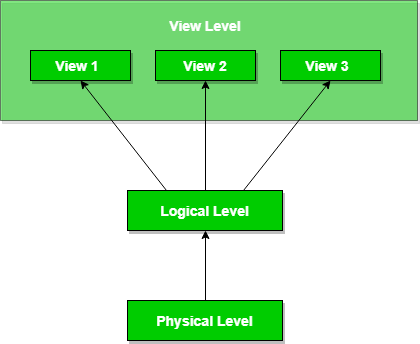A Student-Friendly Guide For SQL Homework

SQL, or Structured Query Language, is probably the most popular database language. Any that handles structured data & relational databases in any capacity needs SQL programmers & SQL-based DBMS and tools in the back end. The language is used in various formats, from standalone DB tools to codes embedded in jobs. Despite the rise of NoSQL, SQL remains overwhelmingly popular and a core aspect of computer science, IT, & web development courses.
Mastering SQL is not just crucial for mastering databases & associated systems but numerous other aspects of computer science & software engineering. Acing SQL assignments and homework is an excellent way to grasp any & all nuances of the language.
So, if you are working on your programs and need some urgent SQL homework help, this article can come in handy. It offers a precise but detailed overview of the rudimentary concepts in SQL.
Let’s begin.
The SQL Essentials
SQL is used to design and manage data in relational database management systems. It is the standard language for relational databases & allows users to create, read, update, and delete relational databases & tables. As a standard language in RDBMSs such as MS SQL Server, MS Access, My SQL, Oracle DB, Maria DB, etc., SQL has its own rules & processes.
The Rules & The Process
- The commands are not case-sensitive. However, keywords are generally written in uppercase.
- SQL statements are written using single or multiple text lines.
- All actions in a database are performed using SQL statements.
- SQL uses tuple relational calculus and relational algebra heavily.
- During command execution, the RDBMS figures out the best possible way to break down & carry out the task while the SQL engine interprets all commands.
- Data Definition, Data Manipulation, and Data Control are the three central objectives of SQL.
- Data definition involves creating, removing, replacing, and altering objects from a database.
- Data modification is all about inserting, updating, & deleting from a table.
- Data control commands or statements supervise the database and objects.
- Transactions are sequences of several SQL commands or statements that perform a specific operation together. Transactions can either be committed or rolled back.
Once committed, a transaction will make certain permanent changes to the database. And, in case of a rollback, any ongoing transaction is stalled, and any changes are undone. A circular buffer tablespace records the changes or actions performed by any transaction. It comes in handy in case any rollback becomes necessary.
The SQL Process
Key Concepts
- Database Schema: The skeletal structure defines the type of data that can be stored, how the data can be organized as well as the constraints & relationships existent.
- Data Constraints: Restrictions are necessary to prevent redundancy, duplicity, unauthorized access & modification, and other unwanted events.
- Data Dictionary/Metadata: Metadata of a database system comprises information about how data is stored in a database, the different constraints, the data schema, and all other information necessary to understand how data is stored in a particular database.
- Query: Queries are used to retrieve information from a database.
- Data Manipulation: Manipulation of information is inevitable in a database & there are four essential operations for data manipulation à CRUD (create, read, update, & delete)
- Data Engine: The database engine is the software application that manages the data & all operations carried out in a database
We now look into the technical aspects of SQL programming in the following sections. Know that if the syntax & the info below seem a bit too hard, you will be better off seeking help from tutors of a professional SQL homework help service.
Database Schemas
- Schemas are logical structures or objects for storing data. There are various schemas, from tables, views, indexes, packages, triggers, sequences, links, etc.
- Different schema objects together make up a relational database.
- Here’s how to create and manipulate schemas in SQL à
SELECT * FROM USER_OBJECTS | USER_TABLES(…)
The ‘USER_OBJECT’ is the schema object, while the USER_TABLE is the logical representation.
- Tables are one of the most popular schema types used in relational databases. Typical components of a table schema layout include à
- The table identifier, i.e., the name of the table
- Column identifiers & data types
- Column constraints
- Default values
- Integrity & relational constraints
The constraints define the range and scope of actions permissible, beyond which the integrity, accuracy, & security of the data may become compromised.
Data Types
Every value in a database is some data. Data types define the data domain or type of the value stored in a column. Therefore, every time you create a new table schema, you will have to mention the data types of every type of column.
Both SQL and SQL-based databases have their own standard sets of databases. Aside from these fundamental types, users can define their types as well.

The SQL Statements
The DQL Statement (The SELECT STATEMENT)
SELECT [ALL| DISTINCT] column 1[, column 2]
FROM table1[,table2]
[WHERE “conditions”]
[GROUP BY “column list”]
[HAVING “conditions”]
[ORDER BY “column-list” [ASC | DESC]]
DML Statements:
- INSERT INTO table1 values(value-list);
INSERT INTO table1(column-list) values(value-list);
INSERT INTO table1(column-list) SELECT values(value-list);
COMMIT – this is a transaction
- UPDATE table1 SET column = value;
COMMIT;
- DELETE FROM table1;
COMMIT;
DDL Statements:
- The ALTER table modifies the structure of a database. It can also be used to change attributes or add new attributes.
Modifying the name of a table:
ALTER TABLE employees RENAME TO newemployees;
Modifying the layout of a table:
ALTER TABLE employees ADD (salary NUMBER(7));
ALTER TABLE employees RENAME COLUMN id TO emp_id;
ALTER TABLE employees DROP(hire date);
DDL statements allow users to add, modify and remove constraints from a schema, enable or disable constraints, and manipulate different advanced properties.
- Typical constraints defined by DDL statements include modifying an entry as NOT_NULL or after some CHECK. PRIMARY and FOREIGN KEYS are also used for constraint purposes.
- The CREATE statement is employed to design new tables in a database.
- The DROP command deletes both the structure & record in a particular table.
- The TRUNCATE statement removes all ROWS in a table and frees up space.
DML Statements:
Data manipulation statements allow users to manipulate the information stored in a database. Three primary commands under DML are INSERT, UPDATE, and DELETE.
- The INSERT command enters data into a table’s row.
INSERT INTO TABLE_NAME(col1, col2, col3, …, colN) VALUES (value1, value2, value3, ….valueN);
INSERT INTO TABLE_NAME VALUES (value 1, value2, value3,….valueN);
- The UPDATE command enables users to update or change information in an entire column in any table.
UPDATE table_name SET [column_name1= value1,…..column_nameN=valueN] [WHERE CONDITION]
DCL Statements:
DCL commands control the access privileges to a database. GRANT and REVOKE are two of the most important statements in this group.
We wrap this write-up with a look at one of the most essential concepts in database management and computer science, data abstraction.
Data Abstraction In Databases
Abstraction is a universal concept in computer science and engineering. The primary ideas behind data abstraction involve simplifying & streamline interactions with a system to hide all underlying complexities & providing a satisfactory user experience.
Database systems are substantially complex, so a need to provide multi-layered abstractions arises.
In any database management system (SQL or NoSQL), three critical levels of abstraction are present.
- The Physical Layer Abstraction: Defines how data is stored on the storage medium
- The Conceptual Level Abstraction: Describes the schema and the relationships among different kinds of data in the database. Data structures & schema are the logical abstractions at this level.
- External or View Level: The level closest to end-users that offers various features & functionalities pertaining to management & database operations

Any change in a particular level will be reflected in the other levels. Therefore, changes are inevitable, and database management systems must be flexible & adaptable to ensure zero or minimal downtime during maintenance, repair, or overhaul.
Understanding abstraction is key to understanding database and software operations. Look for professional SQL homework help and student assignment help services in case of trouble.
And, with that, we wrap up this write-up. Hope it was an informative read for one & all. All the best!
What is the easiest way to learn SQL?
SQL or Structured Query Language is a powerful tool for managing and analyzing data. Many people believe that learning SQL is challenging, but there are some easy and efficient ways to master it. The first step to learn SQL is to understand the basic concepts and syntax. There are several online resources such as Codecademy, Udemy, and Coursera that offer free or paid courses on SQL. These courses provide interactive lessons and practical exercises that help you learn SQL in a fun and engaging way.
Another way to learn SQL is to practice writing queries. Start with simple queries such as selecting and filtering data, then move on to more complex queries such as joining tables and aggregating data. You can practice writing queries on online platforms like SQLZoo or use free tools like MySQL Workbench or SQL Fiddle.
Additionally, it’s essential to stay motivated and consistent while learning SQL. Try setting specific goals and dedicating time to practice regularly. Joining online communities such as Reddit’s r/SQL or attending local SQL user groups can also help you learn SQL faster by connecting with other learners and experts.




